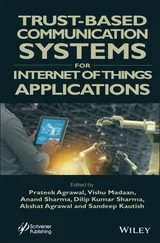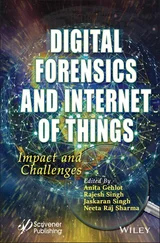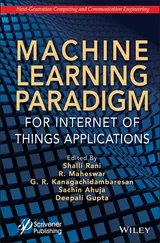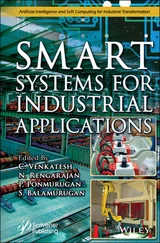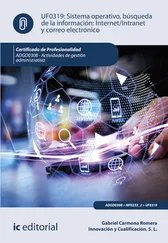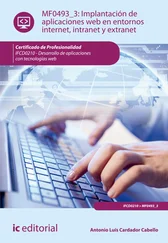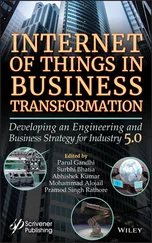Industrial Internet of Things (IIoT)
Здесь есть возможность читать онлайн «Industrial Internet of Things (IIoT)» — ознакомительный отрывок электронной книги совершенно бесплатно, а после прочтения отрывка купить полную версию. В некоторых случаях можно слушать аудио, скачать через торрент в формате fb2 и присутствует краткое содержание. Жанр: unrecognised, на английском языке. Описание произведения, (предисловие) а так же отзывы посетителей доступны на портале библиотеки ЛибКат.
- Название:Industrial Internet of Things (IIoT)
- Автор:
- Жанр:
- Год:неизвестен
- ISBN:нет данных
- Рейтинг книги:5 / 5. Голосов: 1
-
Избранное:Добавить в избранное
- Отзывы:
-
Ваша оценка:
- 100
- 1
- 2
- 3
- 4
- 5
Industrial Internet of Things (IIoT): краткое содержание, описание и аннотация
Предлагаем к чтению аннотацию, описание, краткое содержание или предисловие (зависит от того, что написал сам автор книги «Industrial Internet of Things (IIoT)»). Если вы не нашли необходимую информацию о книге — напишите в комментариях, мы постараемся отыскать её.
This book discusses how the industrial internet will be augmented through increased network agility, integrated artificial intelligence (AI) and the capacity to deploy, automate, orchestrate, and secure diverse user cases at hyperscale.
Audience
Industrial Internet of Things (IIoT) — читать онлайн ознакомительный отрывок
Ниже представлен текст книги, разбитый по страницам. Система сохранения места последней прочитанной страницы, позволяет с удобством читать онлайн бесплатно книгу «Industrial Internet of Things (IIoT)», без необходимости каждый раз заново искать на чём Вы остановились. Поставьте закладку, и сможете в любой момент перейти на страницу, на которой закончили чтение.
Интервал:
Закладка:
When it is said that the internet is in the industry, these changes allow everything inside and around an operational plant (suppliers, distributors, plants, and even the final product) to be digitally related and connected, affording a highly incorporated value chain, from the factory floor, is important to relate this to an environment where all equipment and machines are connected in networks and uniquely providing information [3, 4].
For Industry 4.0 to become feasible, it requires the adoption of a technological infrastructure made up of physical and virtual systems, aiming to create a favorable environment for new technologies to be disseminated and incorporated by the industry, with the support of Big Data Analytics technology ( Figure 1.1), automated robots, simulations, advanced manufacturing, augmented reality, and the IoT, employing the monitoring of technological trends, assisting managers throughout the entire industrial chain [3, 5].
The Industrial Internet of Things has an IoT and IIoT layer in the industry, provoking a prognostic model, since automation, which in general already exists, answers questions regarding what is happening, what happened, and why it happened, considering its network of physical devices (objects and things, among others), systems, platforms, systems, and applications with embedded technology in industry sectors, aiming to promote automation of manufacturing and, thus, increase the productivity of production lines, generating greater competitiveness with the international industry through intelligent factories (smart manufacturing) [6].
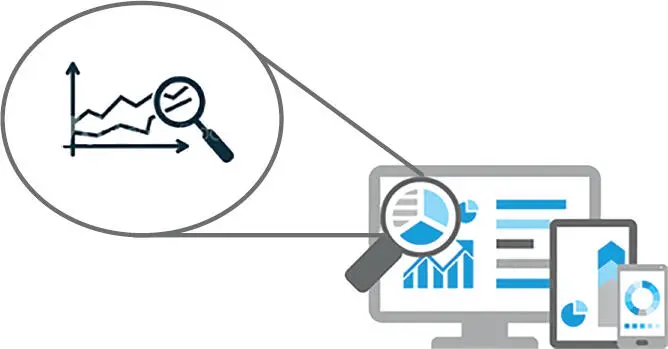
Figure 1.1 Big data analytics illustration.
Generating an increasing number of connected devices (in some situations, it even include unfinished products), since the digitization of data from machines, methods, processes, procedures, and intelligent devices, integrates and complements the operational layer of an industrial plant, enabling communication and systems integration and controls and allowing responses and decision-making in real time. Thus, IIoT becomes a prerequisite for Industry 4.0 [1, 7].
The difference between IoT and IIoT is in the sense that the first relates systems that connect things, complement information, normally only produce data, and can be used in any sector of the industry, transforming the second, to manage assets and analyze maintenance trends [8–10].
IIoT forms a critical layer of the production process and can directly connect a product supplier in real time on the production line, which analyzes the quality and use of your product, as well as connecting the input and output logistics chain of materials and control production, in real time, at the optimum point of operation, becoming an application of production and consumption of data, with a critical profile [8–10].
The use of IoT and IIoT proposes the digital factory bringing benefits to productive plants as an improvement in the use of the asset, reduction of operations or asset cycle cost, improved production, reduction of operations or stoppages, improving asset use (performance), increased speed in decision-making, allow the sale or purchase of products as a service, generate opportunity for new business, among several others. Thus, the premise of digitizing all information can lead to a question about the reason and reason for digitizing so much data, since this information is all digitized and there are all the means (networks) for them to travel and exchange information with each other, it is expected that decisions can be made not only between operators and machines, but also between machine and machine, this is called M2M, Machine to Machine, which before were not available in real time and are now needed [8–11].
Thus, the architectures of industrial automation systems, which have adherence to Industry 4.0, manage to integrate different devices in favor of industrial evolution, with more and more sensors, cameras, and systems that will be monitoring the entire industrial production process, evaluating and supervising the performance of equipment, and providing, in addition to the already known layers of operational control and the entire control framework, the IoT and IIoT layer, where it will converge all this data into a Big Data, delivering operational control possibilities ( Figure 1.2), with decision-making in prognoses and with the possibility of autonomous actions [10–12].
Optimizing the production process of the industry is the main reason for the application of IoT in the production line of the factories, since the IoT technology and its IIoT aspect allows the equipment that makes up the industrial yard of a company today that can be connected in a network. With the data collected and stored in the cloud, it allows the decision-makers of the companies to have quick and easy access to all the information of the company and its collaborators; in other words, this makes all the industrial machinery work automatically through of highly programmable intelligent sensors [13, 14].
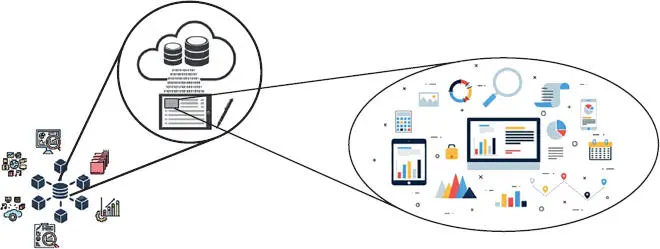
Figure 1.2 Big data illustration.
Wherefore, this chapter is motivated and has the purpose to originate an updated overview of IoT and IIoT, addressing its evolution and branch of application potential in the industry, approaching its relationship with current technologies and synthesizing the potential of technology with a concise bibliographic background.
1.2 Relationship Between Artificial Intelligence and IoT
The emergence of solutions and tools with AI (Artificial Intelligence) technology means solutions, tools, and software that have integrated resources that automate the process of making algorithmic decisions. The technology to be used can be anything from independent databases employing Machine Learning to pre-built models that can be employed to a diversity of data sets to solve paradigms related to image recognition and text analysis. Applied in the industry, it can help a business achieve a faster time to evaluate, reduce costs, increase productivity, and improve the relationship with stakeholders and customers [15, 16].
Machine Learning is only part of AI, that is, it is an AI application in which it accesses a large volume of data and learns from it automatically, without human intervention. This is what happens in the case of recommendations on video streaming platforms and facial recognition in photos on social media pages. AI is a broader concept that, in addition to Machine Learning, includes technologies such as natural language processing, neural networks, inference algorithms, and deep learning, in order to achieve reasoning and performance similar to that of human beings [15, 16].
An AI system is not only sufficient and capable of storing, analyze, and manipulating data, but also of acquiring, representing, and manipulating information and knowledge. Including the characteristic to infer or even deduce new knowledge, new relationships between data-generating information about facts and concepts, from existing information and knowledge and to use methods and procedures of representation, statistical analysis, and manipulation to solve complex questions that are often incognito and non-quantitative in nature [17].
The increase in mass data collection over the years, related to IoT devices, has boosted AI, given that the volume of information produced by people has been growing exponentially. But allied with Big Data technology to understand this massive set of data, which serves as a basis for learning the most diverse software, such as Machine Learning. This data revolution favored the AI scenario, i.e., with more information available, more intelligent, and automated ways to process, analyze, and use the data [18, 19].
Читать дальшеИнтервал:
Закладка:
Похожие книги на «Industrial Internet of Things (IIoT)»
Представляем Вашему вниманию похожие книги на «Industrial Internet of Things (IIoT)» списком для выбора. Мы отобрали схожую по названию и смыслу литературу в надежде предоставить читателям больше вариантов отыскать новые, интересные, ещё непрочитанные произведения.
Обсуждение, отзывы о книге «Industrial Internet of Things (IIoT)» и просто собственные мнения читателей. Оставьте ваши комментарии, напишите, что Вы думаете о произведении, его смысле или главных героях. Укажите что конкретно понравилось, а что нет, и почему Вы так считаете.

